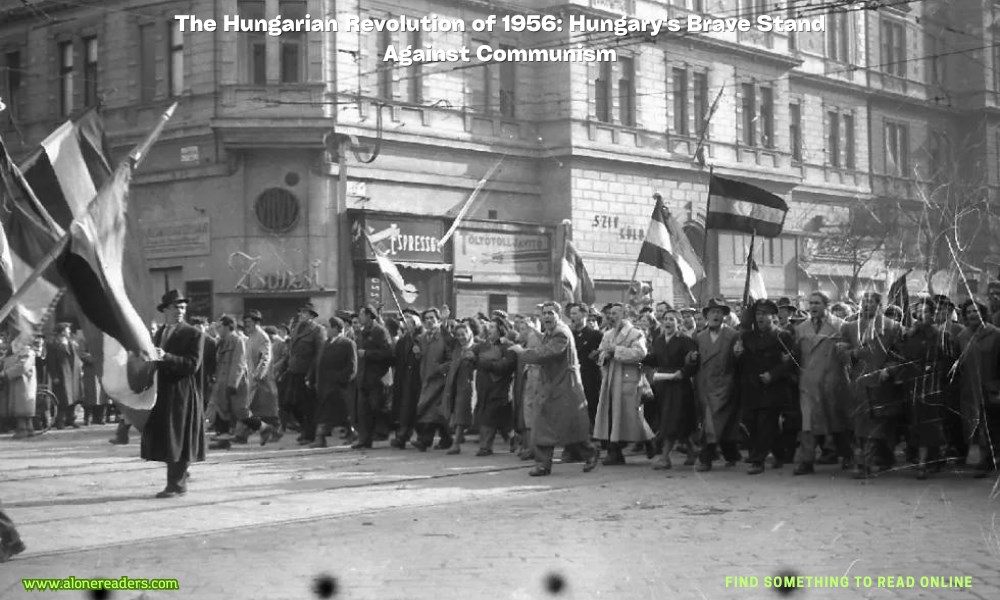
The Hungarian Revolution of 1956 was a spontaneous nationwide revolt against the Soviet-imposed policies of the People's Republic of Hungary. This remarkable event remains one of the most significant episodes in the Cold War era, highlighting the deep-rooted desire for freedom and democracy among the Hungarian people. The revolution began on October 23, 1956, and lasted until November 10, 1956, leaving an indelible mark on the history of Hungary and the broader struggle against communist oppression.
The seeds of discontent had been sown long before the uprising. After World War II, Hungary fell within the Soviet sphere of influence, leading to the establishment of a communist government. The imposition of Soviet-style policies resulted in widespread economic hardship, political repression, and a loss of national sovereignty. Hungarian citizens grew increasingly resentful of the government's authoritarian rule, censorship, and the pervasive presence of the secret police, known as the ÁVH.
On October 23, 1956, a peaceful student demonstration in Budapest quickly escalated into a mass protest as tens of thousands of Hungarians joined the cause. The demonstrators demanded political reforms, including free elections, the withdrawal of Soviet troops, and the reinstatement of former Prime Minister Imre Nagy. As the protests intensified, statues of Stalin were toppled, and symbols of Soviet oppression were destroyed. The Hungarian government, caught off guard by the scale of the uprising, initially responded with force, leading to violent clashes between protesters and security forces.
Amid the chaos, the Soviet Union intervened to suppress the uprising. On October 24, Soviet tanks rolled into Budapest, aiming to restore order. However, instead of quelling the rebellion, their presence galvanized the Hungarian people, who continued to fight bravely against the well-armed Soviet forces. The streets of Budapest became battlegrounds, with improvised barricades and fierce urban combat. Despite being vastly outnumbered and outgunned, the Hungarian revolutionaries displayed extraordinary courage and determination.
Imre Nagy, who had been reinstated as Prime Minister amidst the uprising, attempted to negotiate a peaceful resolution. On November 1, Nagy declared Hungary's neutrality and announced its withdrawal from the Warsaw Pact, hoping to gain international support. However, these moves were perceived as a direct challenge to Soviet authority, and on November 4, a second, more massive Soviet intervention commenced. The Soviet army launched a full-scale assault on Budapest, crushing the revolution with overwhelming force.
The brutal suppression of the Hungarian Revolution resulted in significant loss of life and widespread devastation. Approximately 2,500 Hungarians were killed, and thousands more were wounded. In the aftermath, a wave of repression followed, with mass arrests, executions, and the displacement of over 200,000 refugees who fled the country. Imre Nagy was arrested, tried, and executed in 1958, becoming a martyr for the cause of Hungarian freedom.
Despite its tragic end, the Hungarian Revolution of 1956 had profound and lasting effects. It exposed the weaknesses and contradictions within the Soviet bloc, inspiring other uprisings and movements for independence in Eastern Europe. The bravery of the Hungarian people resonated worldwide, drawing attention to the harsh realities of life under communist regimes. Although Hungary remained under Soviet control until the end of the Cold War, the spirit of the 1956 revolution lived on, contributing to the eventual collapse of communist rule in Hungary and the broader Eastern European region in 1989.
The legacy of the Hungarian Revolution is commemorated annually on October 23, a national holiday in Hungary. This day serves as a reminder of the sacrifices made by those who fought for freedom and justice. The revolution is also remembered through monuments, museums, and educational programs, ensuring that future generations understand the significance of this pivotal moment in Hungarian history.
In conclusion, the Hungarian Revolution of 1956 stands as a testament to the resilience and courage of the Hungarian people. It was a bold stand against the oppressive forces of communism, driven by a deep yearning for independence and democratic governance. While the immediate outcome was tragic, the revolution's impact reverberated far beyond Hungary's borders, contributing to the eventual liberation of Eastern Europe from Soviet domination. The spirit of 1956 remains a powerful symbol of the fight for freedom and human dignity.